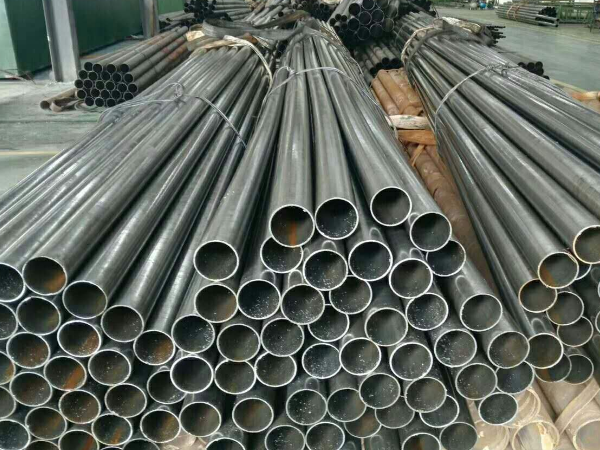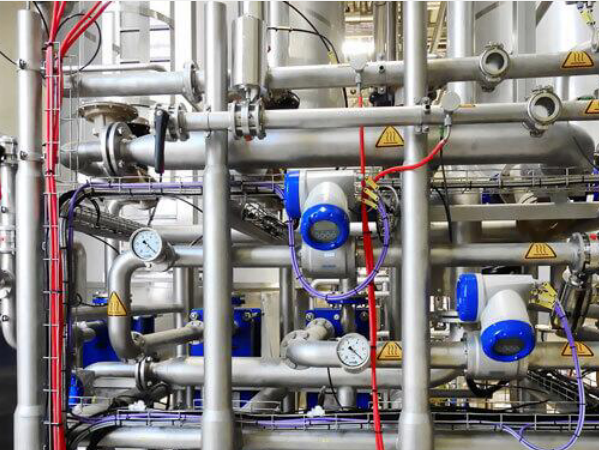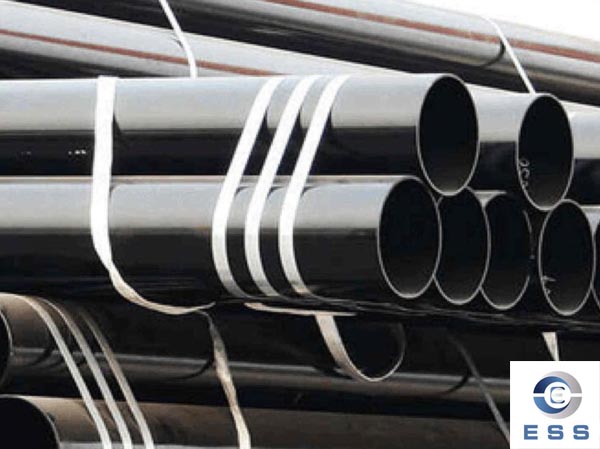Diferencia entre tubería sin costura y tubería con costura
Desde un punto de vista tecnológico, los tubos de acero sin costura se forman mediante laminación, calentamiento con acero redondo, perforación, laminado en caliente, dimensionado y enderezado.
Los tubos de acero con costura, también conocidos como tubos soldados, se sueldan mediante la deformación por flexión de placas o flejes de acero. Existen tubos soldados con costura recta y tubos soldados en espiral (los tubos soldados en espiral generalmente tienen un diámetro grande).
¿Qué son los tubos sin costura?
Los tubos de acero sin costura están hechos de acero redondo perforado. Los tubos de acero sin soldadura en la superficie se denominan tubos de acero sin costura. Según el método de producción, los tubos de acero sin costura se pueden clasificar en: laminados en caliente, laminados en frío, estirados en frío, extruidos, con perfil, etc.
Según la forma de la sección transversal, los tubos de acero sin costura se dividen en dos tipos: redondos y de forma especial. Los tubos con formas especiales presentan diversas formas complejas, como cuadradas, ovaladas, triangulares, hexagonales, en forma de melón, en forma de estrella y con aletas. Su diámetro máximo es de 900 mm y el mínimo de 4 mm. Según sus diferentes usos, existen tubos de acero sin costura de pared gruesa y de pared delgada. Los tubos de acero sin costura se utilizan principalmente en la perforación geológica petrolera, el craqueo en la industria petroquímica, las calderas, los cojinetes y las estructuras de acero de alta precisión para automóviles, tractores y aviación.
①Principales procesos de producción de tubos de acero sin costura laminados en caliente (procesos de inspección principales):
Preparación e inspección de la pieza bruta → Calentamiento de la pieza bruta → Perforación → Laminado de tubos → Recalentamiento de tubos de acero → Determinación del diámetro (reducción) → Tratamiento térmico → Enderezamiento del tubo terminado → Acabado → Inspección (no destructiva, física y química, inspección de Taiwán) → Almacenamiento
②Principales procesos de producción de tubos de acero sin costura laminados en frío (trefilados):
Preparación de la pieza bruta → Decapado y lubricación → Laminado en frío (trefilado) → Tratamiento térmico → Enderezamiento → Acabado → Inspección
El proceso de producción de tubos de acero sin costura se divide en dos tipos: trefilado en frío y laminado en caliente. El proceso de producción de tubos de acero sin costura laminados en frío es generalmente más complejo que el laminado en caliente con líquido ácido. Al decapar, preste atención a la presencia de abundantes burbujas en la superficie. Si aparecen, significa que la calidad del tubo de acero no cumple con los estándares correspondientes. En apariencia, los tubos de acero sin costura laminados en frío son más cortos que los laminados en caliente, y su superficie no es demasiado gruesa. Es bastante rugosa y no presenta muchas rebabas en el diámetro.
Los tubos de acero sin costura laminados en caliente se entregan generalmente laminados en caliente tras el tratamiento térmico. Tras pasar la inspección de calidad, el tubo debe someterse a una rigurosa selección manual por parte del personal. Tras la inspección de calidad, se lubrica la superficie y se realizan múltiples pruebas de estirado en frío. El dispositivo de transmisión se envía a la máquina de detección de defectos para realizar las pruebas. Finalmente, se etiqueta, se clasifica según las especificaciones y se almacena en el almacén. Tubo redondo en bruto → calentamiento → perforación → laminado transversal de tres rodillos, laminado continuo o extrusión → extracción del tubo → dimensionado (o reducción de diámetro) → enfriamiento → enderezamiento → prueba hidráulica (o detección de defectos) → marcado → almacenamiento. Tubo de acero sin costura. Se fabrica a partir de lingotes de acero o tubos sólidos en bruto mediante perforación y posteriormente se lamina en caliente, laminado en frío o estirado en frío.
Las especificaciones de los tubos de acero sin costura se expresan en términos de diámetro exterior * espesor de pared en milímetros.
El diámetro exterior de los tubos de acero sin costura laminados en caliente suele ser superior a 32 mm y el espesor de pared es de 2,5 a 200 mm. El diámetro exterior de los tubos de acero sin costura laminados en frío puede ser de hasta 6 mm y el espesor de pared puede ser de hasta 0,25 mm. El diámetro exterior de los tubos de pared delgada puede alcanzar los 5 mm y el espesor de pared es inferior a 0,25 mm. El laminado ofrece mayor precisión dimensional que el laminado en caliente.
Los tubos de acero sin costura se fabrican con aceros estructurales al carbono de alta calidad, laminados en caliente o en frío, como 10, 20, 30, 35, 45, 16Mn, 5MnV y otros aceros estructurales de baja aleación, o 40Cr, 30CrMnSi, 45Mn2, 40MnB y otros aceros compuestos. Estos aceros se utilizan principalmente en tuberías para el transporte de fluidos. Los tubos sin costura de acero al carbono medio, como 45 y 40Cr, se utilizan para fabricar piezas mecánicas, como las piezas sometidas a tensión en automóviles y tractores. Generalmente, los tubos de acero sin costura deben superar las pruebas de resistencia y aplanamiento. Los tubos de acero laminados en caliente se entregan laminados en caliente o con tratamiento térmico; los tubos de acero laminados en frío se entregan con tratamiento térmico.
El laminado en caliente, como su nombre indica, se caracteriza por su alta temperatura, lo que reduce la resistencia a la deformación y permite alcanzar grandes deformaciones. Tomemos como ejemplo el laminado de placas de acero. Generalmente, el espesor de la palanquilla de colada continua es de aproximadamente 230 mm, y tras el laminado de desbaste y el laminado de acabado, el espesor final es de 1 a 20 mm. Al mismo tiempo, debido a la pequeña relación ancho-espesor de la placa de acero, los requisitos de precisión dimensional son relativamente bajos y no es probable que se produzcan problemas de forma. El objetivo principal es controlar la corona. Para aquellos con requisitos estructurales, esto generalmente se logra mediante el laminado y enfriamiento controlados, es decir, controlando la temperatura de apertura del laminado y la temperatura final del laminado de acabado. Tubo redondo en bruto → calentamiento → perforación → recalcado → recocido → decapado → aceitado (cobrizado) → estirado en frío multipaso (laminado en frío) → tubo de palanquilla → tratamiento térmico → enderezado → prueba hidráulica (detección de defectos) → marcado → almacenamiento.
¿Qué es un tubo con costura?
Los tubos con costura, también conocidos como tubos de acero soldados, están hechos de acero al carbono, un material fácil de soldar. En cuanto a su tamaño nominal, los más comunes son DN15-100, y su diámetro nominal máximo es DN150. Los tubos de acero soldados también se denominan tuberías de agua y gas, ya que se utilizan a menudo para transportar agua caliente y fría, así como gas. En las obras, los tubos de acero soldados galvanizados se denominan habitualmente tubos de hierro blanco, mientras que los tubos de acero soldados no galvanizados se denominan tubos de hierro negro. La pieza bruta utilizada para los tubos de acero soldados es una placa o fleje de acero.
Cuando el tubo de acero soldado en forma de T contiene Ni, presenta una alta resistencia a la corrosión en entornos ácidos. En entornos con ácido sulfúrico o ácido clorhídrico, cuanto mayor sea el contenido de Ni en el tubo de acero soldado en forma de T, mayor será su resistencia a la corrosión. La densidad del flujo térmico y los parámetros estructurales (relación entre el diámetro de la curvatura espiral y el diámetro Dc/D de la tubería de acero soldada en forma de T) influyen en el coeficiente de transferencia de calor de la ebullición de burbuja saturada en tubos espirales verticales. Durante la producción de tubos de acero soldados en forma de T, es frecuente que se produzcan desalineaciones en los bordes, debido a numerosos factores. En la práctica, las tuberías de acero suelen degradarse debido a bordes incorrectos y tolerancias excesivas. Por lo tanto, es necesario analizar las causas de la desalineación de las tuberías espirales de acero y sus medidas preventivas.
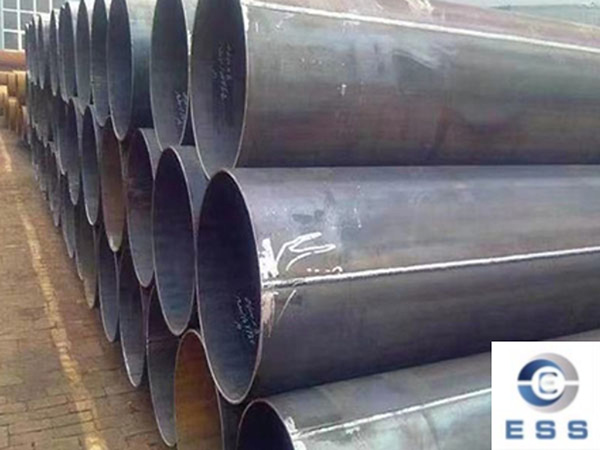
Clasificación de los tubos de acero sin costura
La tubería de acero inoxidable sin costura es un producto de acero largo con una sección hueca y sin costuras. Es resistente a la corrosión por medios ligeramente corrosivos como el aire, el vapor y el agua, y por medios químicamente corrosivos como ácidos, álcalis y sales. También se conoce como tubería de acero inoxidable resistente a los ácidos.
La tubería de acero al carbono sin costura se fabrica perforando lingotes de acero o tubos sólidos en tubos capilares y, posteriormente, laminándolos en caliente, laminándolos en frío o trefilándolos en frío. Los tubos de acero al carbono sin costura desempeñan un papel importante en la industria de tubos de acero de mi país.
Tubo de Caldera Sin Costura
El tubo de caldera sin costura pertenece a la categoría de tubos de acero sin costura. El método de fabricación es el mismo que el de los tubos sin costura, pero existen requisitos estrictos para el tipo de acero utilizado.
Tubería Galvanizada Sin Costura
La tubería galvanizada sin costura se divide en tubería sin costura galvanizada en frío y tubería sin costura galvanizada en caliente. El primero ha sido prohibido, mientras que el segundo ha sido promovido por el país para su disponibilidad temporal.
El tubo de intercambiador de calor sin costura es uno de los componentes del intercambiador de calor. Se coloca dentro del cilindro y se utiliza para el intercambio de calor entre dos medios. Tiene alta conductividad térmica y buenas propiedades isotérmicas. Es un dispositivo que puede transferir rápidamente energía térmica de un punto a otro con casi ninguna pérdida de calor, por lo que se le denomina superconductor de transferencia de calor, y su conductividad térmica es miles de veces mayor que la del cobre.
Tubo de Precisión Sin Costura
El tubo de acero sin costura de precisión estirado en frío es un material de acero de alta precisión. Las principales categorías son: tubo de acero sin costura de precisión, tubo de acero sin costura hidráulico de precisión, tubo de acero sin costura de precisión estirado en frío, tubo de acero sin costura de precisión laminado en frío, tubo de acero sin costura de alta precisión, tubo de acero sin costura de precisión brillante.
El tubo hidráulico sin costura está diseñado para transportar fluidos entre componentes hidráulicos, accesorios, válvulas, bridas y otras herramientas. Está fabricado con material E355 (ST 52.4) o E235 (ST 37.4). Estos dos grados tienen diferentes composiciones químicas, lo que facilita el manejo de la tensión de trabajo.
Clasificación de la tubería con costura
Tubería ERW
La "tubería de acero ERW" es una tubería soldada por resistencia con costura recta, abreviada como ERW. Se utiliza para transportar vapor y líquidos, como petróleo y gas natural. Cumple con diversos requisitos de alta y baja presión y desempeña un papel decisivo en el sector de las tuberías de transporte a nivel mundial.
Tubería de Acero LSAW
La tubería de acero LSAW (soldadura por arco sumergido longitudinal, abreviada como LSAW) es un término profesional para la tubería de acero soldada por arco sumergido con costura recta. Utiliza una sola placa de espesor medio como materia prima, que se prensa (lamina) para formar un tubo en blanco en un molde o máquina formadora. Estas tuberías se producen mediante soldadura por arco sumergido de doble cara y expansión de diámetro.
Tubería de Acero SSAW
Tubería soldada por arco sumergido en espiral SSAW. Las normas de fabricación de tuberías cumplen con la norma GB9711.1. El método de soldadura de tuberías de acero SSAW (incluyendo el revestimiento por arco sumergido y el revestimiento por electroescoria, entre otros) es un método de soldadura importante. Ofrece las ventajas inherentes de una calidad de soldadura estable, alta productividad, ausencia de luz de arco y baja emisión de humo. Esto la convierte en el principal método de soldadura en la producción de importantes estructuras de acero, como recipientes a presión, secciones de tubería, vigas y columnas. En los últimos años, si bien han surgido nuevos métodos de soldadura eficientes y de alta calidad, los campos de aplicación de la soldadura por arco sumergido no se han visto afectados. En cuanto a la proporción de metal depositado por diversos métodos de soldadura por fusión, la soldadura por arco sumergido representa aproximadamente el 10% y no ha cambiado significativamente a lo largo de los años.
Las tuberías de acero con costura y las tuberías de acero sin costura se clasifican según el método de producción
1. Según la forma de su sección transversal, los tubos de acero sin costura se dividen en dos tipos: redondos y de forma especial. Los tubos de forma especial presentan diversas formas complejas, como cuadradas, ovaladas, triangulares, hexagonales, en forma de melón, en forma de estrella y con aletas. Su diámetro máximo es de 900 mm y el mínimo de 4 mm. Según sus diferentes usos, existen tubos de acero sin costura de pared gruesa y de pared delgada. Los tubos de acero sin costura se utilizan principalmente en tuberías para perforación geológica petrolera, tuberías de craqueo para la industria petroquímica, tuberías para calderas, tuberías para cojinetes y tuberías de acero estructural de alta precisión para automóviles, tractores y aviación.
2. Los tubos de acero soldados (tubos de acero con costura) se dividen en tubos soldados por horno, tubos soldados por resistencia eléctrica y tubos soldados por arco automático debido a sus diferentes procesos de soldadura. Debido a sus diferentes métodos de soldadura, se dividen en dos tipos: tubos soldados con costura recta y tubos soldados en espiral. La forma del extremo se divide en tubo soldado redondo y tubo soldado con forma especial (cuadrado, plano, etc.). Los tubos de acero soldados se sueldan mediante costuras a tope o costuras en espiral de placas de acero laminadas en forma de tubo. En cuanto a los métodos de fabricación, se dividen en tubos de acero soldados para el transporte de fluidos a baja presión, tubos de acero soldados con costura en espiral, tubos de acero soldados con bobina directa y tubos soldados con soldadura eléctrica. Los tubos de acero sin costura se pueden utilizar para tuberías de presión de líquidos y tuberías de gas en diversas industrias. Las tuberías soldadas se pueden utilizar para tuberías de agua, gasoductos, tuberías de calefacción, tuberías eléctricas, etc.
(1) Tubo Con Costura
El tocho utilizado para tubos de acero soldados es una placa o fleje de acero. Debido a los diferentes procesos de soldadura, se divide en tubos para soldadura en horno, tubos para soldadura eléctrica (soldadura por resistencia) y tubos para soldadura por arco automático. Debido a las diferentes formas de soldadura, se distinguen dos tipos: tubo con costura recta y tubo con costura espiral. Por la forma de su extremo, se divide en tubo soldado circular y tubo soldado especial (cuadrado, plano, etc.). Los tubos soldados se dividen en las siguientes variedades según sus diferentes materiales y usos:
✤ GB/T3091-1993 (Tubería de acero soldado galvanizado para el transporte de fluidos a baja presión). Se utiliza principalmente para el transporte de agua, gas, aire, petróleo, agua caliente para calefacción o vapor, y otros fluidos generales de baja presión, entre otros usos. Su material representativo es el acero Q235A.
✤ GB/T3092-1993 (Tubería de acero soldado galvanizado para el transporte de fluidos a baja presión). Se utiliza principalmente para el transporte de agua, gas, aire, petróleo, agua caliente o vapor, así como otros fluidos a baja presión, entre otros fines. Su material representativo es el acero Q235A.
✤GB/T14291-1992 (Tuberías de acero soldadas para el transporte de fluidos en minas). Se utiliza principalmente para tuberías de acero con costura recta para la presión de aire en minas, el drenaje y la descarga de gases de pozo. Su material representativo es el acero Q235A, grado B.
✤GB/T14980-1994 (Tuberías de acero soldadas de gran diámetro para el transporte de fluidos a baja presión). Se utiliza principalmente para el transporte de agua, aguas residuales, gas, aire, vapor de calefacción y otros fluidos a baja presión, entre otros usos. Su material representativo es el acero Q235A.
✤GB/T12770-1991 (Tuberías de acero inoxidable soldadas para estructuras mecánicas). Se utiliza principalmente en maquinaria, automóviles, bicicletas, muebles, decoración de hoteles y restaurantes, y otras piezas mecánicas y estructurales. Sus materiales representativos son 0Cr13, 1Cr17, 00Cr19Ni11, 1Cr18Ni9, 0Cr18Ni11Nb, etc.
✤GB/T12771-1991 (Tuberías de acero inoxidable soldadas para el transporte de fluidos). Se utilizan principalmente para el transporte de fluidos corrosivos a baja presión. Los materiales representativos son 0Cr13, 0Cr19Ni9, 00Cr19Ni11, 00Cr17, 0Cr18Ni11Nb, 0017Cr17Ni14Mo2, etc.
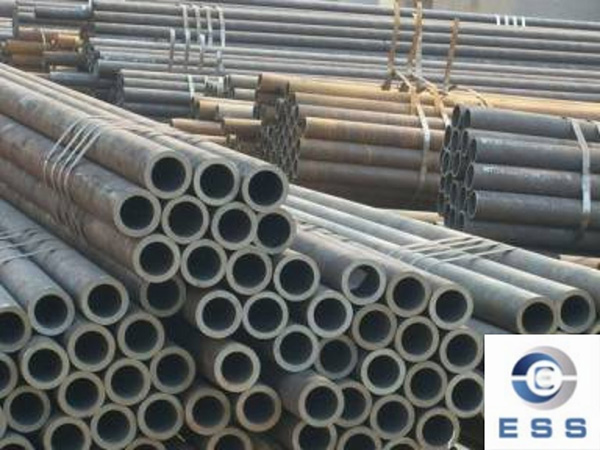
(2) Tubos de Acero Sin Costura
Debido a sus diferentes tecnologías de fabricación, se dividen en tubos de acero sin costura laminados en caliente (extruidos) y tubos de acero sin costura estirados en frío (laminados). Los tubos estirados en frío (laminados) se dividen en dos tipos: tubos redondos y tubos con formas especiales.
a. Laminado en caliente (tubos de acero sin costura extruidos): tocho de tubo redondo → calentamiento → perforación → laminado diagonal de tres rodillos, laminado continuo o extrusión → desforrado de tubos → dimensionado (o reducción) → enfriamiento → tocho → enderezado → prueba hidrostática (o detección de defectos) → marcado → almacenamiento.
Tubo de acero sin costura laminado en frío: Tubo redondo en bruto → Calentamiento → Perforación → Recalcado → Recocido → Decapado → Engrasado (cobrizado) → Laminado en frío multipaso → Tubo en bruto → Tratamiento térmico → Enderezamiento → Prueba hidrostática (detección de defectos) → Marcado → Almacenamiento.
b. Los tubos de acero sin costura se dividen en las siguientes variedades según sus diferentes usos:
✤GB/T8162-1999 (Tubos de acero sin costura para estructuras). Se utilizan principalmente en estructuras generales y mecánicas. Su material representativo (número de marca): acero al carbono 20, acero 45; Acero aleado Q345, 20Cr, 40Cr, 20CrMo, 30-35CrMo, 42CrMo, etc.
✤GB/T8163-1999 (tubería de acero sin costura para el transporte de fluidos). Se utiliza principalmente para tuberías de transporte de fluidos en equipos de ingeniería y de gran tamaño. El material representativo (grado) es 20, Q345, etc.
✤Gb3087-1999 (tubo de acero sin costura para calderas de baja y media presión). Se utiliza principalmente para el transporte de caudales de baja y media presión en calderas industriales y domésticas. El material representativo es el acero 10, 20.
✤Gb5310-1995 (tubos de acero sin costura para calderas de alta presión). Se utiliza principalmente para cajas colectoras y tuberías de transporte de fluidos de alta temperatura y alta presión en calderas de centrales eléctricas y nucleares. Los materiales representativos son 20G, 12Cr1MoVG, 15CrMoG, etc.
✤Gb5312-1999 (tubos de acero sin costura de acero al carbono y acero al carbono-manganeso para uso marítimo). Se utilizan principalmente en tubos de presión de calderas y sobrecalentadores de buques de clases I y II. Material representativo para aceros de clases 360, 410 y 460.
✤Gb1479-2000 (tubería de acero sin costura para equipos de fertilizantes de alta presión). Se utiliza principalmente para el transporte de fluidos a alta temperatura y presión en equipos de fertilizantes químicos. Los materiales representativos son 20, 16Mn, 12CrMo, 12Cr2Mo, etc.
✤Gb9948-1988 (tubería de acero sin costura para el craqueo de petróleo). Se utiliza principalmente en calderas, intercambiadores de calor y tuberías de fluidos de fundiciones de petróleo. Sus materiales representativos son 20, 12CrMo, 1Cr5Mo, 1Cr19Ni11Nb, etc.
✤Gb18248-2000 (tubería de acero sin costura para cilindros de gas). Se utiliza principalmente para la fabricación de diversos cilindros de gas e hidráulicos. Sus materiales representativos son 37Mn, 34Mn2V, 35CrMo, etc.
✤GB/T17396-1998 (tubería de acero sin costura laminada en caliente para soportes hidráulicos). Se utiliza principalmente para la fabricación de soportes hidráulicos para minas de carbón, cilindros, columnas y otros cilindros y columnas hidráulicas. Sus materiales representativos son 20, 45, 27SiMn, etc.
✤Gb3093-1986 (tubería de acero sin costura de alta presión para motores diésel). Se utiliza principalmente para tuberías de alta presión para sistemas de inyección diésel. Su acero generalmente se estira en frío y su material representativo es 20A. GB/T3639-1983 (Tubo de acero sin costura de precisión, estirado o laminado en frío). Se utiliza principalmente en estructuras mecánicas y equipos de prensado de carbono para obtener tubos de acero de alta precisión dimensional y buen acabado superficial. Su material representativo es el acero 20, 45, etc.
✤GB/T3094-1986 (Tubo de acero sin costura estirado en frío, tubo de acero con forma especial). Se utiliza principalmente para fabricar diversas piezas estructurales y está fabricado con acero estructural al carbono de alta calidad y acero estructural de baja aleación.
✤GB/T8713-1988 (Tubos de acero sin costura de diámetro interior preciso para tuberías hidráulicas y neumáticas). Tubos de acero sin costura estirados o laminados en frío con diámetro interior preciso para cilindros hidráulicos y neumáticos. Su material representativo es el acero 20, 45, etc.
✤Gb13296-1991 (Tubos de acero inoxidable sin costura para calderas e intercambiadores de calor). Se utiliza principalmente en calderas, sobrecalentadores, intercambiadores de calor, condensadores y tubos catalíticos de empresas químicas. Tubos de acero resistentes a altas temperaturas, altas presiones y a la corrosión. Sus materiales representativos son 0Cr18Ni9, 1Cr18Ni9Ti, 0Cr18Ni12Mo2Ti, etc.
✤GB/T14975-1994 (Tubos de acero inoxidable sin costura para estructuras). Se utilizan principalmente en estructuras generales (decoración de hoteles y restaurantes) y estructuras mecánicas de empresas químicas con resistencia al aire, a la corrosión ácida y una cierta resistencia de los tubos de acero. Sus materiales representativos son 0-3CR13, 0Cr18Ni9, 1Cr18Ni9Ti, 0Cr18Ni12Mo2Ti.
La API SPEC5CT-1999 (Especificación de
Tubería de Revestimiento y Tubería) es elaborada y publicada por el Instituto Americano del Petróleo (API) para su uso internacional. Entre sus características se incluyen: tubería de revestimiento: desde la superficie del terreno hasta el pozo de perforación, como revestimiento de la tubería, y la tubería a través de la conexión del collar. Los materiales principales son J55, N80, P110 y otros tipos de acero, y C90, T95, resistentes a la corrosión por sulfuro de hidrógeno, y otros tipos de acero. Los aceros de baja calidad (J55, N80) permiten la soldadura de tuberías de acero.
La diferencia entre tubos de acero sin costura y tubos de acero con costura:
(1) Diferentes Materiales
✤GB/T14976-1994 (tubería de acero inoxidable sin costura para transporte de fluidos). Material de la tabla de generación para 0Cr13, 0Cr18Ni9, 1Cr18Ni9Ti, 0Cr17Ni12Mo2, 0Cr18Ni12Mo2Ti. YB/T5035-1993 automóviles y Tubos y transmisiones. Materiales que representan hijo 45, 45Mn2, 40Cr, 20CrNi3A, etc.
✤API SPEC5CT-1999 (Specific tuberculosis and revestimiento y producción) es producida y publicada por el Instituto Americano del Petróleo (API) para su uso mundial. J55, N80, P110, acero, C90, T95, resistencias, J55, N80, P110 Hidrógeno, entre otros. Los aceros de baja calidad (J55, N80) pueden ser tubos de acero soldados.
✤ Tubería: La tubería es la mejor del petróleo, las tuberías son la pieza central del petróleo, la tubería es la tuberculosis interna integral. Hasta la superficie. Pérdida de materiales principales para los aceros J55, N80, P110 y C90, T95, resistentes a la corrosión por azufre de hidrógeno, son los aceros de baja calidad (J55, N80). Pueden ser tubos de acero soldados.
✤ API SPEC 5L-2000 (Specificación de Tuberías), Elaboración y Publicación de Petróleo, Instrucciones de Uso en Petróleo. Empresas de la industria petrolera y gas. El material principal de las tuberías es acero B, X42, X56, X65, X70 y otros grados.
Tubería de acero soldada: Se refiere a tubos de acero con costuras superficiales tras doblar y deformar flejes o placas de acero en formas redondas o cuadradas. Las piezas brutas utilizadas para las tuberías de acero soldadas son placas o flejes de acero.
Tubería de acero sin costura: Tubo de acero fabricado a partir de una sola pieza de metal sin costuras superficiales.
(2) Diferentes Categorías
① Tubos de acero soldados
Según los diferentes métodos de soldadura, se pueden clasificar en tubos soldados por arco, tubos soldados por resistencia de alta o baja frecuencia, tubos soldados por gas, tubos soldados por horno, tubos Bondi, etc. Según su propósito, se dividen en tubos soldados generales, tubos soldados galvanizados, tubos soldados por soplado de oxígeno, tubos de revestimiento de alambre, tubos soldados métricos, tubos laminados, tubos para pozos de bombeo profundo, tubos para automóviles, tubos para transformadores, tubos soldados de pared delgada, tubos soldados de forma especial y tubos soldados en espiral.
② Tubos de acero sin costura
Los tubos sin costura se dividen en tubos laminados en caliente, tubos laminados en frío, tubos estirados en frío, tubos extruidos y tubos de sección superior. Según la forma de la sección transversal, los tubos de acero sin costura se dividen en dos tipos: redondos y de forma especial. Las tuberías con formas especiales incluyen tubos cuadrados, elípticos, triangulares, hexagonales, en forma de melón, en forma de estrella y con aletas. Su diámetro máximo es de 650 mm y el mínimo de 0,3 mm. Según el propósito, existen tuberías de pared gruesa y de pared delgada.
(3) Diferentes Usos
① Tuberías de acero soldadas
Se pueden utilizar como tuberías de agua y gas, etc. Las tuberías soldadas longitudinalmente de gran diámetro se utilizan para el transporte de petróleo y gas a alta presión, etc.; las tuberías soldadas en espiral se utilizan para el transporte de petróleo y gas, pilotes de tuberías, pilares de puentes, etc.
② Tuberías de acero sin costura
Se utilizan como tuberías para la perforación geológica petrolera, tuberías de craqueo para la industria petroquímica, tuberías para calderas, tuberías para cojinetes y tuberías de acero estructural de alta precisión para automóviles, tractores y aviación.
(4) Diferentes Propósitos
① Los tubos de acero sin costura se utilizan principalmente como tuberías o piezas estructurales para el transporte de fluidos, principalmente en la industria de la maquinaria, mientras que los tubos de acero con costura se emplean principalmente en la industria de la construcción, como agua, gas, aire comprimido y otros fluidos a baja presión. Sin embargo, los tubos de acero sin costura se utilizan para todas las tuberías a presión. El precio de los tubos de acero sin costura es mayor que el de los tubos de acero con costura.
② Los tubos con costura generalmente soportan una presión máxima de operación inferior a 20 kg, lo que representa un rango de uso seguro. Se utilizan generalmente para fluidos a baja presión, como agua, gas y aire comprimido.
Los tubos de acero sin costura pueden soportar presiones ultraaltas; por supuesto, su espesor de pared aumentará consecuentemente, por lo que deben diseñarse según los requisitos de presión. Se utilizan generalmente para equipos de alta temperatura y alta presión, como tuberías de aceite a alta presión y tubos de calderas. También existen tubos de acero sin costura para uso estructural, según los requisitos de diseño. La costura de soldadura, cuya tensión residual se ajusta para que sea equivalente al metal base, y su rango de resistencia a la presión es prácticamente equivalente al de los tubos de acero sin costura. También se puede considerar su uso.
Por supuesto, también existen en el mercado tubos de acero sin costura que utilizan tubos de acero con costura que se calientan en su totalidad y luego se estiran o laminan con un cabezal de núcleo. Suelen ser de tamaño pequeño. Este tipo de tubo es de acero sin costura solo en apariencia, y su calidad no es muy buena.
Ventajas de los tubos de acero con costura en comparación con los tubos de acero sin costura:
(1) Los tubos de acero con costura se refieren principalmente a los tubos de acero soldados y, debido a su bajo costo y alta eficiencia de producción, los tubos de acero sin costura son reemplazados en muchos sectores. Si bien los tubos de acero soldados reemplazan a los tubos de acero sin costura, aún presentan diferencias esenciales.
(2) Los tubos de acero sin costura se forman perforando un lingote de acero o una pieza bruta de tubo sólido, y posteriormente se laminan en caliente, en frío o estiran en frío. Los tubos de acero soldados son tubos de acero soldados y formados por una tira o placa de acero que se deforma en forma circular o cuadrada, y presentan una junta en la superficie. La característica principal de los tubos de acero soldados es que presentan costuras.
(3) El proceso de producción de tubos de acero sin costura se puede dividir en estirado en frío y laminado en caliente. El proceso de producción de tubos de acero sin costura laminados en frío es generalmente más complejo que el laminado en caliente. Los tubos deben laminarse primero en tres rodillos y el dimensionado debe realizarse después de la extrusión. Si la superficie no responde a la grieta, se corta el tubo con una fresa y se obtiene una pieza bruta de aproximadamente un metro de longitud. Posteriormente, se somete al proceso de recocido, donde se realiza un lavado ácido con ácido. Durante el decapado, se debe verificar si hay mucha espuma en la superficie. Si esta se forma, la calidad del tubo de acero no alcanzará el estándar correspondiente.
(4) El tubo de acero sin costura laminado en frío tiene una apariencia más corta que el de los tubos de acero sin costura laminados en caliente. El espesor de pared del tubo de acero sin costura laminado en frío es generalmente menor que el del tubo de acero sin costura laminado en caliente, pero su superficie es más brillante que la del tubo de acero sin costura de pared gruesa, y no presenta rugosidad ni rebabas.
Las ventajas de los tubos soldados en comparación con los tubos de acero sin costura u otros tubos de acero con costura son las siguientes:
(1) Los tubos de acero electrosoldados ofrecen una amplia gama de tamaños y permiten producir tubos soldados con un diámetro exterior de 45 a 4000 mm, un espesor de pared de 0,1 a 40 mm y una longitud de hasta varios cientos de metros. El espesor de pared es menor que el de los tubos de acero sin costura y el de los tubos para horno, y los tubos soldados para horno también son pequeños. El diámetro y el espesor de pared del tubo son de 4 a 50 mm y 5 a 28 mm, respectivamente. Por lo tanto, los tubos electrosoldados permiten ahorrar metal.
(2) Permiten producir tubos de acero con diversas composiciones químicas.
(3) La aparición de nuevas unidades, equipos y sistemas de control de soldadura eléctrica mejora continuamente, lo que permite que la soldadura tenga una mayor resistencia que la matriz metálica. El uso del tratamiento térmico elimina la tensión de soldadura y permite que el tubo soldado obtenga una estructura uniforme en la sección transversal. Por lo tanto, la calidad del tubo soldado no es inferior a la del tubo de acero sin costura, e incluso puede sustituirlo en ocasiones.
(4) Dado que el tubo de acero se forma en frío, el tubo obtenido presenta una alta precisión dimensional y rugosidad superficial, y el consumo general de metal es de tan solo entre el 1,03 % y el 1,05 %.
(5) La unidad de soldadura eléctrica de tubos de acero puede interrumpir el suministro eléctrico y reducir el consumo de energía.
(6) El proceso de producción es fácil de automatizar y continuo, con alta productividad y buenas condiciones de trabajo.
¿Cómo elegir tubos y tuberías, soldados o sin costura?
A pesar de las numerosas ventajas de los tubos soldados, los tubos sin costura siguen siendo mejores que los soldados, especialmente en entornos hostiles, debido a su mayor resistencia, mayor presión y mejor resistencia a la corrosión. Dependiendo de la aplicación específica y el costo, se debe decidir qué tipo es mejor. Los tubos y tuberías se pueden fabricar tanto sin costura como soldados, según los requisitos de la aplicación.
Read more: Tamaños de tubos de acero sin costura









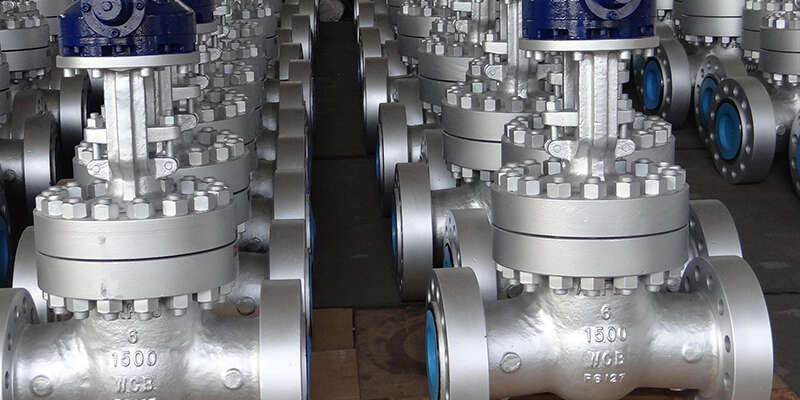
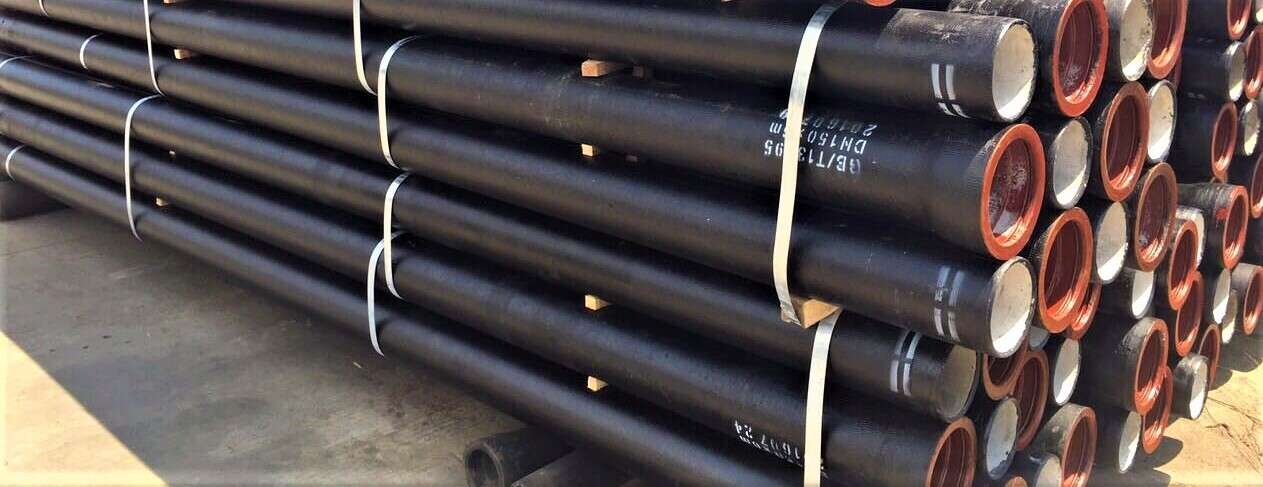


 Eastern Steel Manufacturing Co., Ltd no solo mejora la producción de productos y los servicios de venta, sino que también brinda servicios adicionales de valor agregado. Siempre que lo necesite, podemos completar sus necesidades específicas juntos.
Eastern Steel Manufacturing Co., Ltd no solo mejora la producción de productos y los servicios de venta, sino que también brinda servicios adicionales de valor agregado. Siempre que lo necesite, podemos completar sus necesidades específicas juntos.








